Marcia Thornton Jones's Blog, page 5
June 26, 2025
Contrast (Holly Schindler)
In pattern design, it can be one of the most important things: the right contrast to make your images pop. In order to get the contrast right in my latest (a Halloween pattern), I put each of my witch's hats on a different color, making a kind of checkerboard background.
As it's been mentioned before, contrast also comes from things that plain don't go together. Like, say, sweet fabric patterns like gingham and daisies on witch's hats:

In writing, contrast can come from conflicting desires. The most basic of all conflicting desires is what a character wants vs. what they need.
But I think, as art often shows us, things that offer conflict (or contrast) can often make the most beautiful pictures...
~
Holly Schindler is the author of The Junction of Sunshine and Lucky
June 23, 2025
Contrast Creates Energy: Smack Dab In the Imagination by Dia Calhoun

Without the tension contrast creates, we have stasis. Contrast, which is a type of asymmetry, is generative. Symmetry is restful. When reading a novel, the energy comes with the plot twist, when reading a poem, with the turn. These create contrast with what has come before and catapult the story, and the reader’s interest, in new directions.
What, then, is the right combination of symmetry and asymmetry to create dynamic contrast in a creative work? In "Finitude and the Infinite", the final Sophia Lecture #3 in Iian McGilchrist’s (best known for The Master and His Emissary: The Divided Brain and the Making of the Western World) series, Wholeness, Imagination, and the Cosmos, McGilchrist uses the example of a Japanese kimono. The overall form or shape is symmetrical, but the design is asymmetrical. The combination creates a pleasing wholeness that is still dynamic and not static. This is the type of contrast I’d like to achieve in my writing.
Note: The photo above is not the actual kimono he referenced.
June 20, 2025
Interview with Michael P. Spradlin, Author of Threat of the Spider
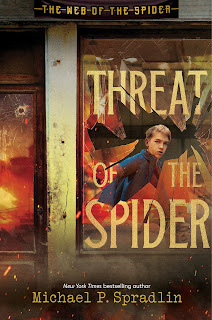
Welcome to Smack Dab,Michael. Please tell us about Threat of the Spider.
Threatof the Spider is the second book in the Web of the Spider series, following onthe heels of The Rise of the Spider which came out last fall. The series is setin a small town in Germany and follows the lives of several young people duringthe 1930s and Hitler’s rise to power.
How did you come to writea historical fiction series for young readers focusing on Nazi Germany?
Ihad interest in doing a book on the Edelweiss Pirates who were a real group ofchildren that challenged the Nazi regime during the war. After some back andforth with my editor when went back even further looking for the seeds ofyouthful dissent. It was important to me that readers realize that not everyoneGerman citizen supported Hitler or the Nazi party. Especially at the beginning.
Ansel’s “UnassailableFacts of Life” are such a memorable part of his character. How did you developthis quirk? Do any of these sayings have special meaning to you?
I don’t know where the idea came from, but once I tried a couple of‘facts’ (which as we know are no facts at all) they seemed to fit hispersonality like a glove. They are one of my favorite parts of his characterand I laugh at his willingness to interject this ‘wisdom’ into any situation. Ithink one of my favorites is #41When the owls cometo the mice picnic, they are not there for the sack races.
Your author's notementions visiting Heroldsberg and Nuremberg for research. How did physicallybeing in these locations shape the story?
Ithad a tremendous impact on the book. For the most part the historical fictionI’ve written takes place in a world that no longer exists. Heroldsberg sufferedlittle during the war in the way of damage from bombing or fighting. And withNuremberg the medieval city was rebuilt after the war to how it was. So it wasa chance to see places as the characters did. And it was invaluable.
How did you balancecreating fictional characters like Ansel with incorporating historical figureslike Heinrich Himmler?
I’mnutty about including real historical figures in my novels. I just think itadds so much gravitas to the story. Plus it’s fun to play puppet master withsome of these figures and gain insight to what they might have thought or felt.
What challenges did youface in writing about such a dark historical period for a middle-gradeaudience?
Thesehave been challenging books no doubt. These are complicated historical,political, religious and socio-economic themes at work here. Trying to condensethat down in an interesting ‘non-info dump’ way hasn’t been easy. Luckily smartcharacters help you figure it out.
The Hitler Youth plays asignificant role in the story. What sources did you use to understand how thisorganization recruited and influenced young people?
Thereare a ton of sources. YouTube video interviews with Hitler Youth members, ahost of memoirs and histories. The Hitler Youth is to me, one of the mostfascinating parts of the Nazi rise to power. This complete and total indoctrinationof a country’s youth is just mind boggling.
The book shows howeveryday citizens responded differently to the rise of Nazism. What message doyou hope young readers take away about standing up against injustice?
Standingup against injustice is hard. Being the one that says, ‘this far, no further,’is always rife with conflict. I want young readers to realize that freedom isprecious. It’s a garden that all of us need to water and nurture. Becausefreedoms can be taken away.
The book's title "Threatof the Spider" has multiple potential meanings. Could you explain itssignificance in relation to the story?
Thewhole idea for the series was that Spider is an avatar for the Nazis. Theystart out small, spinning webs that eventually take them into every corner andnook of the country. Spiders have various qualities. Sometimes they threaten,sometimes they strike. I think it’s the perfect metaphor for these books.
What similarities do youhope young readers might draw between Ansel's experience and our currentpolitical circumstances? How might his story help them navigate questions abouttruth, censorship, and the importance of independent journalism?
WellI would hope we all, not just young people, would follow embrace Ansel’smindset. Ansel is a truth teller. It may be hard to hear the truth at times,but it needs to be told. Someone has to guard it and be its champion. He’slearned from his father’s example, that among the first of those an evil regimewill strike at are the reporters and journalists who tell the truth.
What’s next?
Iam working on book four in the series, and I have a new novel coming this fallcalled The Raven’s Shadow. It’s a ‘league of extraordinary young gentlemen’with Abraham Lincoln, Edgar Allan Poe and Charles Darwin united to save theworld.

Where can we find you?
X (Twitter)@mspradlinauthor
The Gram @mspradlinauthor
~
Michael P.Spradlin is the New York Times bestselling and EdgarAward–nominated author of the Spy Goddess series, The Youngest Templar series,and the Web of the Spider series, as well as several works of historicalfiction, including the Western Heritage Award–winning Off Like theWind: The Story of the Pony Express. He currently resides in Lapeer,Michigan, with his wife, daughter, and his schnoodle, Sequoia. Learn more atMichaelSpradlin.com.
June 15, 2025
A Study in Voice
In my MFA classes, I am constantly asked about voice. What is it, how to find it, how to make itstand out, and how to make it unique, and what is an "authentic" voice.
On one hand, a writer’s “voice” refers to the rhetorical blendof word choice, tone, point of view, and syntax that create phrases, sentences,and paragraphs to flow in a particular manner. This voice comes through in two main ways: through omniscient narration or throughthe character’s point of view. For example, Tony Morrison and NathanielHawthorne tell their stories through an omniscient third person narration.However, both authors have a unique voice, set by the tone, wordchoice, organization of paragraphs and chapters, and pacing that set each novel apart.
A writer’s voice often refers to the overall theme expressedwithin the pages of a novel, highlighting the book’s mood and worldview. Forexample, in discussing the books of Margaret Atwood, readersmight note themes, character types and writing style that demonstrate a distinctive voice even as it transcendsindividual works.
On the other hand, a character’s voice is the unique tone a writerimbues upon different characters. It encompasses the language and syntax of thecharacter, their personal worldview, and often comes wrapped in an accent thatrelates to the setting and status. For example, a novel’s main character mightbe affable and loquacious so much so that words spill from their mouth tothe annoyance of the other characters. Or, perhaps a novel’s main character suffersfrom PTSD and is full of youthful angst and quirky observations. Or perhaps acharacter is self-effacing. Or perhaps the character is a gentle giant, at oncefriendly and fierce-looking.
The challenge becomes when the writer’s voice becomes sointrusive that a character fades into the shadows. When the writer takescenterstage, the story is lost.
Two books I’ve enjoyed recently excel in reflecting both awriter’s voice and a character’s voice. The challenge in writing historical fiction is,given the depiction of another time and place, the writer needs to keep thevoice authentic yet accessible to the modern reader. Too much of an accent andthe character is reduced to a stereotype. But too much of a modern sensibilityand the story feels inauthentic. And if thestory takes place in ancient times, the challenge becomes all the moreinteresting.

I’ve really enjoyed Bernard Cornwell’s The Last Kingdom (2004).The story takes place during the nineth century, using first person POV. Uhtredof Bebbanburg, the son of a Saxon noble, recounts his kidnapping by DanishVikings to find a home with a powerful warlord and ultimately embraces Vikingtraditions. As a young man, he is tornbetween his Viking family and the growing conflict with King Alfred of Wessex.His primary motivation becomes reclaiming his ancestral land and hisinheritance. Cornwell navigates the clashing of two cultures and worldviews throughthe perspective of one caught in the middle. The tension is palatable. Destinyis all.
Kerry Madden-Lunsford’s book, Werewolf Hamlet (2025), isanother great study in first person POV. Not really a historical fiction, theconnection to history offers an interesting juxtaposition. No one has a moretimeless, spirited voice than Shakespeare. Unless it’s a werewolf citingHamlet.
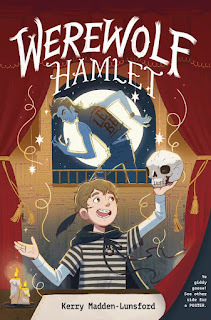
Ten-year-old Angus navigates afamily in crisis. The setting of Los Angeles sets the stage for a clashing oftwo worlds: the gritty world of drugs against the glamorous worldof the rich and famous. Here, the world of make-believe, in which Iron Man breaks up dueling Spider-Mans, Princess Leia drinks a smoothie and Charlie Chaplin waddles along the street, collides with reality. About to lose their home, the family struggles as Liam, theolder brother, spirals out of control because of substance abuse and addiction. Tocope with his anxiety, Angus speaks to Hollywood’s legendary icons, CharlieChaplin, Harry Houdini and Buster Keaton. First person POV is further explored in chapters set apart, much like reading a script for a play, depicting conversations with Liam and revealing Angus' anger and fear for his brother. He flings Shakespearean insults athis older brother: "Thou art a ragged wart!"
For his fifth-grade project, Angus decides to write a play,Werewolf Hamlet, in which Hamlet turns into a werewolf whenever he becomesenraged. A deft blend of humor and poignancy, the book explores the devastingeffects of addiction on a family and the resulting strained relationships but whoare ultimately connected by love.
The book includes a letter from the author that offersinsights into why she wrote the book. For another interesting interview on her writing process and why Kerry wrote this book, see this interview with Teaching Books: https://forum.teachingbooks.net/2025/02/guest-blogger-kerry-madden-lunsford/
For more information, check out Kerry's website: https://www.kerrymadden.com/
Also, if you’re interested in taking a deep dive into Voiceand Viewpoint, check out this Webinar hosted by Lorin Oberweger and FreeExpressions: https://www.free-expressions.com/registration/p/october2-9-marriage-that-makes
Thank you for reading!
-- Bobbi
June 12, 2025
Contrast Adds Depth to Characters by Darlene Beck Jacobson
Night and Day. Old and Young. Happy and Sad. Noisy and Quiet.
While comparisons like these can be opposites, they also help us think about both sides of something.
And also it helps us recognize that there are many places in between.

Think about it like this: These stones show shadow and light. The shadows between the stones is where the mystery lies. The unknown.
We've heard the saying "Things aren't always black and white. Sometimes there are shades of grey." This metaphor isn't only about color, but rather conflict. That unknown something we turn pages to find out.
So many of the interesting things in life lie in these grey areas. This is where our characters struggle. Where they head down a wrong path.
The contrast between what a character chooses to do, say, or think are often in conflict with each other. These differences raise the stakes of the story and make it much more interesting. Contrast in a character's behavior, action, or dialogue makes that character stand out in the best way.

Darlene Beck Jacobson enjoys finding things that contrast or stand out in nature as well as in her characters.
June 11, 2025
Compare. Contrast.
 Two styles. Two color palettes. Two artists. Right?The first painting is obviously Piet Mondrian's Composition with Red, Blue and Yellow (1930).The second, Farm Near Duivendrecht (1916) by...
Two styles. Two color palettes. Two artists. Right?The first painting is obviously Piet Mondrian's Composition with Red, Blue and Yellow (1930).The second, Farm Near Duivendrecht (1916) by...Piet Mondrian.(As an aside, after World War I, Mondrian immersed himself in the Paris culture of artistic innovation which triggered this change in style.)
I like to think my writing has grown over the years. Not this obviously. Obviously.
For me, the contrast is more in shades and nuances.
Today, as I sit here putting together pitches for my editor (I have so many ideas, I'm asking her to choose which she might want me to pursue next), I can sense a shift on the horizon.
No worries. I have zero plans to go full-on Mondrian, who felt as if his abstract works still expressed ties to nature, but yes, it's the right time to see what else I can do.
Jody Feldman doubts she'll ever drop the fun and excitement from her future middle-grade stories, but she may embrace the book genres she's gravitated to her whole life.
June 10, 2025
Interview with Lauren Magaziner, Author of The Incorruptibles

Welcome to Smack Dab, Lauren! Please tellus a bit about The Incorruptibles.
Thank you so much for having me! The Incorruptibles is an uppermiddle grade fantasy for ages 10-14 about sorcerers who use their magic tooppress and a group of resistance fighters—known as Incorruptibles—who battlethese tyrannical sorcerers with nothing more than tech and grit.
We follow thirteen-year-old Fiora Barrowling, whose parents werekilled by sorcerers when she was six. She now lives with her uncle in histailor shop and works as his apprentice. But after Fiora has a skirmish withtwo of the most powerful sorcerers (one of whom vows to kill her!), she’swhisked away to Inc Academy, a training base where they teach kids how tocombat magic with awesome gadgets like lightning blasters, wind swords, andforce-field shields. At its core, TheIncorruptibles is a good vs. evil epic—an action-packed fantasy adventure.
The novel presents a world wheresorcerers rule through Dark Deals. What inspired this magic system and thepower dynamics in your story?
I think the power dynamics work surprisingly similarly to ourworld: where many people in power use their authority to exploit, harm, andoppress. Ultimately the idea of this magic system came from thinking a lotabout the unchecked power I felt like I was witnessing. It made me want tocreate a world in which anyone couldchoose to become a sorcerer. But it’s almost like a Faustian bargain. Sure, youget power… but you also have to give up a piece of your body or soul or senseof personhood to obtain it.
Is power ever really worth the cost in our world or in the world inside The Incorruptibles? Because there’salways a cost. I spent years pondering the question. In addition, I chewed overthat famous Lord Acton quote: “Power tends to corrupt and absolute powercorrupts absolutely.” In a word where power corrupts—and to become a sorcerermeans to be corrupted by the promise of power—we must have Incorruptibles aswell.
The Incorruptible Academy is so richlydetailed! Colored cloaks, flower-themed squads…What inspired this educationalsetting and organization system?
I started with my overnight camp. Every summer when I was a kid, Iwent to an 8-week overnight camp, where I lived in bunks, three bunks per agegroup. There was individual bunk loyalty, but there was also age group loyaltywhenever all three bunks had to band together for an activity. That’s the feelI wanted. Comradery more often than competition. And the bonds you make—it’sbeyond friendship. We grew up together, alongside each other. Twenty yearslater, I still feel familial about the folks from my age group.
The way I settled on the floral motif still makes me chucklebecause I have terrible luck keeping flowers alive. But I think there’ssomething so beautiful about what flowers and plants symbolize: growth, life,hope, springtime, planting roots, branching out, resurgence. It felt like suchan apt analogy for what I wanted Inc Academy to stand for. And the lovely thingabout flowers is that they’re colorful! So, the motif lent itself perfectly toeach squad having its own cloak color. Clovers in green, Thistles in purple,and Buttercups in yellow. Along with different colors for all the olderstudents in the other eighteen squads.
I knew I wanted squads of different fighting styles in each year(one team of short-range fighters, one team of mid-range, and one oflong-range), but figuring out the flavor of each of the teams came down tothinking about the type of squad each captain (Quinn, June, and Silvius) wouldlead, based on their temperaments.
The Thistle squad has such distinctpersonalities. Really, character building can be every bit as involved asworld-building. Maybe more so. Can you tell us a bit about your process tobuild your characters?
One of the best pieces of writing advice I’ve ever received:Characters—all characters—need tofeel to the reader like they can pluck them out of the book, put them in anentirely different situation, and still know how they’d react elsewhere. That’swhat makes characters fully realized three-dimensional people.
So to start: I thought about the archetypes I needed to balance outthe Thistles. First, the main character Fiora, with all the fight and fire inher. Cameron, the kindhearted sweetie, the cinnamon roll. Mel, the cantankerousbrat, the rival. Onyx, the smart, bookish one. Quinn, cool in personality andavoidant about her mysterious backstory.
But to give them full depth, enough to make them feel real, I needed to texture theircharacters with specifics and details. First, tease out their backstories.Then, latch onto their personality quirks and idiosyncrasies (like gestures andactions that are unique to each one). And then of course, I have to considertheir reactions (like, for example, how Onyx runs cold when he’s angry, whileFiora and Mel both run hot, whereas Cameron doesn’t seem to get angry… morefrustrated or disappointed.) I also think what makes a character ring true istheir flaws, so I’m very intentional about including imperfections.
Mel's character arc is fascinating. Shegoes from antagonist to ally to something more. How did you approach writingher evolution? Did you always have this arc in mind for her, or did youdiscover it through rewrites?
Always—always—Mel washeaded for this arc! It was so exciting for me to have the challenge of turninga brat into someone we root for. My goal for the last third of the book was forthe reader to step back and say, “Wait, do I actually like her?!” And for theanswer to be yes, we do love thisarrogant little crabapple. She’s reliably surly… but (to me) endearingly so.
And Mel’s character arc is still cooking! She has anotherfascinating arc coming up in book two. Surprises are in store. It’s beencrystal clear from the jump where Mel needed to start, all the beats she has tohit, and where she ultimately has to end up.
How did you develop the concept of"side effects" for sorcerer powers? I love the idea of addinglimitations to magic.
When I first graduated college and was working at Scholasticmagazines, my coworkers and I used to play thought-experiment games. One ofthese was: “Okay, if you found a genie and could have three wishes, what wouldthey be? But… aha! It’s a devious genie! And it warped your wish!” The point ofthe game was to try and come up with a wish so specific, so clear, that itcould not be purposely misinterpreted, twisted, or messed up, not even if theone granting it had bad intentions.
I guess that game stuck with me. Because I couldn’t stop thinkingabout all the ways getting something you wish for could wrinkle… Yes, you getyour power, and yes, it becomes a problem you did not anticipate. Sometimes themagic does more harm than good.
The book features inclusion of Realm SignLanguage and a deaf character (Leo). Could you talk a bit about how youapproached writing this element?
Leo being hard of hearing was actually inspired by my bubbie. It’sa bit different, since Bubbie has hearing loss and Leo was born hard ofhearing… but I paid a lot attention to the ways in which Bubbie losing 75% ofher hearing was affecting her. The hearing aids went in, but they weren’tfoolproof, like TV, movies, and books sometimes made it seem. They were animprovement, but there were still things she didn’t catch. She struggled morein louder, crowded spaces than in individual one-on-one conversations inquieter rooms. She became much more reliant on looking at our mouths as wespoke. Sometimes we have to get very close to her ears, even with the hearingaids in.
This was right around the time I had conceived of this highlyinclusive book, and it manifested in Leo’s character, which I aimed to tacklewith respect and empathy. I was determined not to gloss over the hard bits,like how annoying it is for Leo when his hands are incapacitated or howfrustrating it is to talk to people who don’t know Realm Sign Language. And Idid a lot of thoughtful research: YouTube, Reels, essays, soaking up as much asI could about the HoH/deaf lived experience. My bubbie doesn’t sign, so Iwatched a lot of videos. I continue to study, as Leo is such an integralcharacter to the story. And one of my favorites!
It was crucial that Leo being hard of hearing and trans are twoimportant parts of him… but not the wholeof him. That’s how I feel about my own intersectional identities. Slices ofa big pie.
Fiora's tailoring skills end up beingcrucial in several unexpected ways. How did you decide on this particular skillset for your protagonist?
I gave her this skill in a largely aspirational move. I’ve alwayswanted to sew. In high school, I tried to make a purse out of a pair of oldjeans, and what I ended up with was a “purse” that would hold nothing and causeme to lose my wallet. (I think it would be fairer to call it a holey piece ofdenim.)
But sewing always seemed fun and exciting, so I gave it to Fiora.By the time I remembered that I (the author) was actively bad at tailoring, Iwas too deep into the book. At some points, I wondered why I had done this tomyself. I was constantly looking up fabrics. Specific stitches. The easiest andhardest materials to work with. And more.
In the end, absolutely no regrets because Fiora’s sewing reallydoes come in handy in both book one and two. But when it comes to my ownpersonal dearth of sewing knowledge, I just hope I left no loose ends. (Getit?!)
You mention in your author bio thatyou’re “a Thistle through and through.” What qualities of the Thistles resonatewith you personally?
I love the Thistles’ tenacity, their nerve, their refusal to giveup, their daring. Their stubborn, thorny little weed of a mascot inspires me.
To me, being a Thistle about taking risks and being persistent. Fora writer, that’s appealing; I love challenging myself to write books thatexperiment with format or age category. TheIncorruptibles, for example, wasmy attempt to write a book that spanned the gap between middle grade and YA, aself-directive to juggle a massive (andinclusive) ensemble cast of characters, and a way to write social commentary. Ifelt bold writing this book. The keyboard is my Inc tool of choice.
If you could give the Thistles one pieceof advice as they embark on their journey at the end of the book, what would itbe?
Teamwork! Remember your teamwork. (The Thistles are desperatelygoing to need it in book 2, where I put them through the wringer. And maybethrough Ringer too.)
What’s next?
The Incorruptibles 2, of course!It comes out in the summer of 2026, and I’m so excited about the direction ofthe story. All the action-packed fun of book one… with a few shocking twists.More details coming soon!
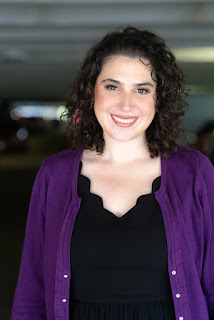
Where can we find you?
If you want to find me in person, the eventspage on my website is a great place tostart! I’ve got a launch party, a panel, an ALA signing, and many bookfestivals coming up! I’ve also got a newsletter,so that’s a consistent place I can pop into your inbox once a month withmusings and news!
And if you want to find me on socialmedia, I’m on Instagram(most actively), Facebook,Bluesky, and Threads. See you there! ☺
June 8, 2025
CONTRAST by Jane Kelley
Contrast is where great stories begin.
Look at this photo. (My dad, by the way, is the one on the left.)
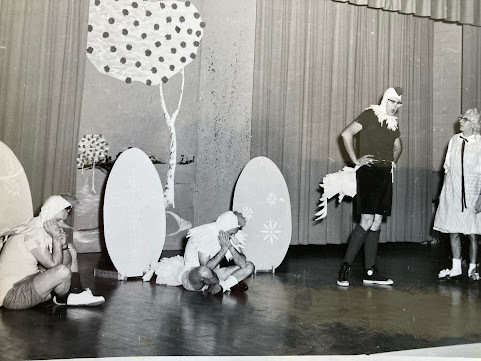 What's wrong with this picture?
What's wrong with this picture? Little children in chicken costumes would be adorable -- and expected. Primarily of interest to their family and friends.
Grown men in chicken costumes? That already provides contrast. Add to that the guy in darker clothing who clearly has a lot to say about something. Now we're really wondering what is going on.
Contrast causes tension. This bit of cognitive dissonance grabs our attention and holds it. We want that chord to resolve and so we'll stick around until it does.
Contrast is comic. Contrast is tragic. The bigger they are, the funnier they fall.
JANE KELLEY has put many characters in uncomfortable situations. Including in her first novel, NATURE GIRL, when she forced a city kid to survive a few days on the Appalachian Trail.
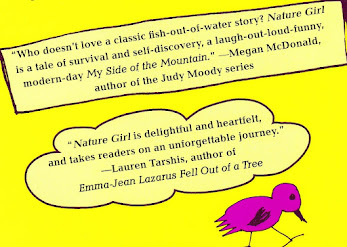
June 4, 2025
Interview with Kyle Casey Chu, Author of The Queen Bees of Tybee County

Welcome to Smack Dab,Kyle! Tell us a bit about The Queen Bees of Tybee County.
Thanks so much for the invite andpleasure to be here!
The Queen Bees of Tybee County followsChinese American seventh grade basketball superstar, Derrick Chan, who findshimself boarding with his eccentric Grandma Claudia in rural Heritage, Georgiaone summer. As Derrick unearths more about his family history, his Chineseheritage, and his queer identity, he gathers the nerve to compete in Heritage’slocal Queen Bees pageant… in drag.
This story gets to the heart of what Iwanted and gravitated toward as a kid- compasses in the form of elder rolemodels to navigate uncharted terrain, dramatic, soul-moving creative arts andan entourage of fast friends that really had my back. It’s all of the thingsthat saved me when I came out in the seventh grade and my whole world changed.When being Chinese American and being queer felt like irreconcilable blemishesthat I once felt desperate to hide. I wrote this book for any middle grader outthere also grappling with concepts of identity that feel too mountainous,overwhelming and complex to process alone. I hope they find solace (and fun!)in this book!
To start, I have to tackleit: drag has been politicized to such a great extent in recent years. Why didyou decide to tackle the subject?
Queer and Trans people are often askedand expected to minimize ourselves to survive. If we are not careful,minimizing ourselves becomes a way of living. It is an empty life.
Tackling drag wasn't a decision forme, as much as a question of if I've had enough. And as it turns out, I refuseto make myself or my writing smaller just because the irrational right spun thewheel and randomly decided I'm today's boogie man.
I've realized in my life that I've farmore often regretted not doing what I wanted, as opposed to doing what Iwanted. Wouldn't it be so sad to pour your entire heart and soul into a storyonly to pump the brakes and self-censor because you're afraid it’s a badmoment? To decide, once again, that because I'm not palatable or mild enoughfor myopic transphobes who have never met a drag queen, who time and again, areincapable of providing any facts or figures to support bold, unfounded, staleand reheated Anita Bryant crusade-era claims, that I should halt everything thatI love doing? My life work, and in a way, my life itself?
I write the worlds I want and thelessons I've learned. It's a special shade of sad to limit my craft because themisinformed have psyched themselves into imagining I'm someone and somethingI'm obviously not. That’s just another closet that I refuse to stuff myselfinto.
What’s been the receptionamong young readers specifically? I loved that the theme of finding “joy” ranthroughout the novel. I would have been all over that feeling as a youngreader.
I’m not sure yet, and the suspense is killing me! The book just came outon April 15th, and most of the middle graders I’ve met through school visitshave only just started reading it. I know some good reviews have come in onGoodReads, but I reckon they are mostly coming from adults. I’m still waitingto see what the reception is like amongst middle graders.
And the “queer joy” focus came directly from middle schoolers! I met withmiddle school GSA members and queer and trans seventh graders from SanFrancisco and Atlanta as research for the book, and all of them, totallyindependent of each other, professed wanting to read a happy story. I feel likethis tracks with shows like “Heartstopper” making such a splash.
But hot take: I’ll admit that, at first, Heartstopper didn’t resonatewith me. And I realized it’s because a lot of the queer media I consumedgrowing up (as a millennial) was rather tragic and angsty. And I believe thereare many reasons such sad queer and trans stories predominated. Queer and transpeople have had to justify ourselves and our identities for decades. In manycases, audiences have learned to expect queer and trans personhoods, storiesand identities to be neatly packaged in triumph formulas, i.e. being suchdetermined and resilient queens that we overcome the prejudices and hardships,so we can live out and proud as our true selves. There is, and should be roomfor these stories. They’re important. I once needed them. And also, this shouldn’tconstitute all queer and trans stories out there. Like, I love themovie, “Moonlight.” But I also love “But I’m a Cheerleader.” And like, “M3gan.”Let there be variety. Let there be fun.
So anyway, I leaned into the joy aspect for this reason. Also, becausethere is so much queer rumination around “push” factors. Like, what will failor go wrong? What about what will go right? What about going toward somethingbecause you love it so much, you can’t imagine your life without it? There’s somuch richness and momentum in that. It’s how I felt about art as a middlegrader. And it’s a refuge I know a lot of queer and trans kids still seek out,today.
We need hopeful, joyful stories so we can imagine these outcomes forourselves!
I was fascinated bydualities all through the book: Derrick struggles with balancing differentsides of himself (his love for basketball and his interest in drag). Also, thebook explores several instances of prejudice: both racial discrimination andanti-LGBTQ+ attitudes. How much was purposeful and how much just naturallypoured into the book?
This is a great question, and my answer would be: a little of both! Atthat age, I remember everything felt so starkly black and white, life anddeath. Either I would be popular, or completely alone. Either cool, or a totalloser. A successful, straight-A student, or a failure. (Then again, I’m a dragqueen, so maybe I’m just a touch dramatic, haha). But life is, of course, morecomplicated than that. A series of grays on a spectrum, as opposed to an on/offof a switch. Because we are a sum of parts, contradictions, and weird littleinterests that make us the odd mosaics we are.
As a kid, I was a collection of contradictions. An honor roll student whogot into fights in the playground. A bombastic extrovert who spent hourspracticing saxophone alone in a practice room. A Chinese American kid who wasterrible at math (the media told me this combination was impossible!) Both/and,vs. either/or thinking: the idea that multiple seemingly contradictory truthscan coexist at once, is a therapeutic concept that has given me a lot of reliefin the messy journey of life. It’s something many adults struggle with, even.And it’s a concept worth familiarizing kids with. Because it can bring themcloser to reaching that quiet peace in being who they are meant to be.
And regarding racial discrimination and homophobia/transphobia, it’sinteresting, because sixth and seventh grade is when I became very aware of myidentity and social context. That there were parts of my being that some wouldfind unacceptable. So, summoning back that age to write Queen Bees, thesetopics naturally poured into the story.
When I came out in the seventh grade, my friends turned their backs onme. Feeling like a pariah and having to find new friends was earth-shattering.Because developmentally, social belonging is the highest survival need for thisage. There was, of course, homophobia. But more than that, there was also the anticipationof it in every interaction I had. A veil of hurt and mistrust, a fearfulhesitation before meeting anyone, that they could turn violent or hostile atany moment, that haunted me. This was the biggest scar, and I did my best tocapture that as Derrick reflects, in the book.
Around the same time, I also started to come into my own understanding ofrace. I was fortunate to go to school in San Francisco, where there were a lotof Chinese American students, but still, I found many fellow Chinese Americanstudents (and myself included), romanticized whiteness, some even yearning tobe white or half-white. Some girls went to the mall to buy blue contact lensestogether. The ones with older sisters talked wistfully about getting eyelidsurgeries… “one day.” Some Chinese girls didn’t even date Chinese guys. A girlonce told me “You’re kinda cute…for an Asian” (I am so grateful to the movieDiDi for shining a light on this very real dynamic). I was left feeling like myrace was something to be “fixed.” As if my race (mis)spoke for me, and I wouldspend my whole life correcting it, arguing against it.
It probably goes without saying that processing queer and racial identityas a 12 year old was a wild undertaking. It opened an ache in me. I hadquestions. And years later, after studying race and ethnicity in college, therewere a lot of things I wish I knew then. Conversations I wish I could’ve hadand reassurances I wish I could’ve given to my younger self. In a way, thisbook is a collection of those conversations and reassurances.
Speaking of naturallypouring in: how did your own experience as a Chinese American influence thecultural elements in the book, like the references to cheongsams and Chinesecuisine?
I’m fourth generation, which means I was raised pretty American.Cantonese wasn’t spoken in my household, I watched a lot of television. Neitherof my parents are lawyers or doctors. So growing up, my strongest connection tomy Chinese heritage was through my grandpa. He insisted on eating Chinese foodfor every meal, celebrating Lunar New Year with red envelopes, and alwayswearing jade (no matter how egregiously it clashed with his outfit). Visits tohis house became a touchstone for who I was, and where I came from.
As a kid, I developed a sort of shame around my race. And it wasn’t untilI went to college and studied race and ethnicity as an adult, that I discoveredand fostered a pride and appreciation in my heritage, and really leaned intolearning more about my people.
As a kid, I assumed that my Grandpa was from China. The kids in theplayground told me I must be from China, so I assumed Grandpa was too. Andbesides, everything my Grandpa did and liked was Chinese. But it turns out thatmy Grandpa was born and raised in Oakland and he had the exact same journey asme. He felt racially alienated in school and sought out Chinese history, taughthimself Cantonese and started collecting Chinese artifacts, as a way to reclaimwho he was. To rewire. I think there’s something deeply profound about ourparallel journeys- both turning back and taking the same path, thoughgenerations apart. I wanted to include this in Derrick’s own journey, in hopesit will facilitate some movement or critical reflection in young Asian Americanreaders.
And as for the cheongsams, my mom is a hobby seamstress, and when Istarted doing drag more seriously, we connected over making a cheongsamtogether. And for what it’s worth, they are HARD to make! That wasn’t thecutest “first sewing project” idea, but with some patience and persistence, wefinished it together. Just like in the book!
I also loved the familythemes throughout. The relationship between Derrick and his grandmother Claudiais central to the story. Also, Derrick’s father initially resists his son’sinterest in drag but eventually comes to accept them. What made you decide tohave this intergenerational connection be so important to Derrick'sjourney?
Grandparents are divine shepherds of middle grade stories! Feistygrandmas get away with so much!
Haha, but in all seriousness, I couldn’t imagine this story without theintergenerational element. In my 12-year-old-on-the-brink-of-teens brain, therewas no way that any adult would have anything thought-provoking orgame-changing to offer me. But as I was navigating racial shame and homophobia,I realized that that was kind of exactly what I needed. An adult- a cool adult-to show and teach me about all of the paths available to me. And to model thatall of these parts can come together in a way that makes me whole and stilllovable.
I definitely pushed my parents away at that age, as one does. But Imodeled Claudia’s character after my mom, who has grown into embracing who Iam. It was a practice in appreciating all of the elements of her that made me,me, those special things we share.
The thread about Derrick’s father also comes from a real place for me. Iremember when I came out to my parents, one of the first things my dad said wasthat he was worried my life would be harder. First responses to kid’s comingout are seldom graceful or ideal, and I definitely didn’t receive that well atthe time. But I think there’s so much love hiding in those imperfect words.That his first thought wasn’t how wrong I was, or how he didn’t accept me orwish I was different, but it actually came from protective worry. He wanted meto live a happy life, and knowing how the world is, he was afraid this mightcomplicate that.
It just struck me as real. And so I followed that thread, and wove in alot of my own dad into Carson’s character. How he’s always pushed me to be thebest, and that it all comes from a place of protection, of wanting me to beokay. I didn’t love it as a kid, but now, I look back on this with neweyes and appreciation.
What do you hope youngreaders, especially those questioning their identity, will take away fromDerrick's journey?
I hope young readers understand the vast, oceanic multitudes theycontain. That they are limitless. They can be basketball players. Dragqueens. Astronauts. Concert pianists. Queer, trans, straight, ace, aro, all ofthese things at once. Ask for the world. It is never too much.
I hope young readers take away that their uncertainty and pain can feellike a cell, shuttering you off from everything else. But I promise that many,many people have moved through these things before. This heartbreak has allbeen felt. All you need is the exact right friend, book or movie, to see andunderstand that. Look out for your reflections.
I hope young readers understand how powerful it is to follow what makesyou come alive, to listen to what makes your heart flutter and reach for itwith your everything, than to cower to the voices projecting their ownmisguided fears onto you. That when you follow that path, you will find yourpeople, and you will find who you’re meant to be.
Was there a particularscene or moment in the book that was especially meaningful for you to write?
When Derrick recalls watching movies with his dad late at night, and hisdad mutters the words to the actors onscreen, in perfect time. I once wanted tobe an actor, and yearned to be seen in that way.
And when Claudia talks about why she competed in the Queen Bees pageant-how the girls wouldn’t look her in the eye. I’ve often felt this way, and manytimes, in queer spaces. It’s what led me to drag.

Where can we find you?
@pandadulce on IG!
What’s next?
I am blessed to have many irons in thefire!
“After What Happened at the Library”:A Debut Feature Film (for adults)
The short film, “After What Happenedat the Library,” is a character introduction and proof-of-concept for theeponymous surrealist drama feature film (Comps: “Everything EverywhereAll At Once,” “I May Destroy You,” “May December,” “Eternal Sunshine of theSpotless Mind”). The short film has been accepted to four AcademyAward-qualifying festivals so far in 2025, and won a Special Jury Award atFlorida Film Festival.
The feature (currently in script form)expands on the world of the short film in the days and weeks post-virality,when everyone — friends, authorities, politicians, bad actors — want a piece ofAkita.
You’ll meet Akita’s absurdist dragsister Tonya; outspoken, neuroatypical leftist work wifey Eve; and charming,anime-obsessed, autistic twin brother Mikey, as Akita’s mind bends aroundreality in her struggle to reclaim authorship of her viral story.
Catch the short film at Provincetown Film Festival and PalmSprings ShortsFest (both in June 2025)!
“Betty”: A Short Film (for adults)
Thanksto a short film production grant from NewFest and ConcordMusic Originals, we are producing a grimy, heartwarming, absurdistdrag queen comedy with the same director of “After What Happened at theLibrary,” SyraMcCarthy (“Grey’s Anatomy”, “The Dropout,” “Josephine”).
“Betty”follows Betty St. Clair, mother of an all-Asian American drag family (based onmy all-Asian American drag family, the Rice Rockettes), as they perform for anall-Cantonese-speaking senior center (also based on a real-life performance atSan Francisco’s On-Lok Senior Center). Betty soon discovers her Yeh Yeh(paternal grandfather), who isn’t aware of Betty’s drag persona, is in theaudience! Gulp!
WillBetty overcome her debilitating self-doubt and her sisters’ poorly-timedbackstage hijinks to come out to Yeh Yeh through an epic drag performance??
Thisshort film premieres at NewFest Pride on June 1st in NYC!
“What Kind of Queen?”: A Picture Bookon José Sarria” (for kids)
My friend, an LGBTQ+ Historian and I,are releasing a historical children’s picture book on San Francisco drag legendand activist José Sarria, an opera-singing WWII veteranand the founder of the Imperial Court System, a network ofregional royal drag courts raising money for charitable LGBTQ+ causes.
Abrams Kids is putting it out in 2026!
Book 2 of “The Queen Bees of TybeeCounty”: A Companion Book (for kids)
Derrick and JJ’s adventure continuesin a forthcoming soft sequel/companion book that I am currently drafting! Nosneak peeks to speak of yet, but on the foundation of self-reflection anddiscovery built in the first book, you can expect more light-hearted adventure,as well as developments on JJ and Derrick’s relationship in this second novel.
The sequel is expected to hit shelvesin Fall 2026!
Snag a copy of The Queen Bees of Tybee County
June 2, 2025
Middle Grade Reading for June
Hi everyone! Summer is here and I wanted to highlight a few new middle grade books. I interviewed the authors of these books on my blog Book Q&As with Deborah Kalb.
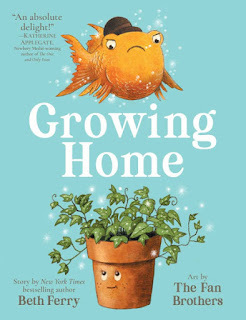
First up is Beth Ferry's new novel Growing Home, her first middle grade book after writing many picture books. "Writing a middle-grade novel had been on my to-do list for some time but it wasn’t easy leaving my comfort zone of 500-ish words to jump into the unknown zone of thousands and thousands of words," she said. "But then Covid hit, and it felt like the right time to try." She said, "I found I enjoyed the freedom to explore the characters and setting more deeply. You don’t have room for that in picture books. And I loved the space I had for dialogue. I really enjoyed writing the dialogue."
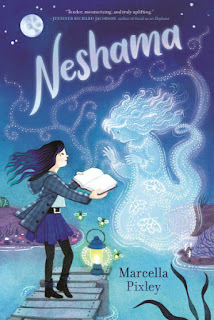 Marcella Pixley's new novel is called Neshama. "I have always believed in ghosts," she said, adding, "My Grandma Anne diedwhen I was a very little girl, and the night before her funeral I had a strangedream that she came to visit me. I had been crying all day. In the dream shewas trying to comfort and assure me that she was okay but she had to leave. Iasked her if I could come with her, but she told me it wasn’t my time." She said, "When I began writing Neshama, I imagined what itwould like for a quiet, imaginative, 11-year-old girl like Anna to discoverthat she could write poetry with the spirits of her ancestors. What would theysay to her about who they were and what they left behind?"
Marcella Pixley's new novel is called Neshama. "I have always believed in ghosts," she said, adding, "My Grandma Anne diedwhen I was a very little girl, and the night before her funeral I had a strangedream that she came to visit me. I had been crying all day. In the dream shewas trying to comfort and assure me that she was okay but she had to leave. Iasked her if I could come with her, but she told me it wasn’t my time." She said, "When I began writing Neshama, I imagined what itwould like for a quiet, imaginative, 11-year-old girl like Anna to discoverthat she could write poetry with the spirits of her ancestors. What would theysay to her about who they were and what they left behind?"
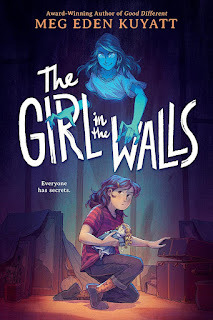 And last but not least, there's Meg Eden Kuyatt's new novel, The Girl in the Walls. "All my protagonists start out with one of my wounds, or aside of myself I want to explore, she said, adding, "While Selah in Good Different is discoveringher autism, I wanted V to (at least start) loud and proud about her autism. With V I wanted to explore how I love being autistic, butpeople can make me doubt this, or make me wonder if I am only appreciated whenI’m a high-masking, well-behaved autistic." She said, "I know surely that for those who truly love me, I am lovedas I am. But this doesn’t mean doubt can’t creep in, and hurtful interactionscan make me doubt myself. And when I struggle, I write about it, because I’mlearning alongside my protagonist."
And last but not least, there's Meg Eden Kuyatt's new novel, The Girl in the Walls. "All my protagonists start out with one of my wounds, or aside of myself I want to explore, she said, adding, "While Selah in Good Different is discoveringher autism, I wanted V to (at least start) loud and proud about her autism. With V I wanted to explore how I love being autistic, butpeople can make me doubt this, or make me wonder if I am only appreciated whenI’m a high-masking, well-behaved autistic." She said, "I know surely that for those who truly love me, I am lovedas I am. But this doesn’t mean doubt can’t creep in, and hurtful interactionscan make me doubt myself. And when I struggle, I write about it, because I’mlearning alongside my protagonist."
Happy summer, and happy reading!
--Deborah Kalb



